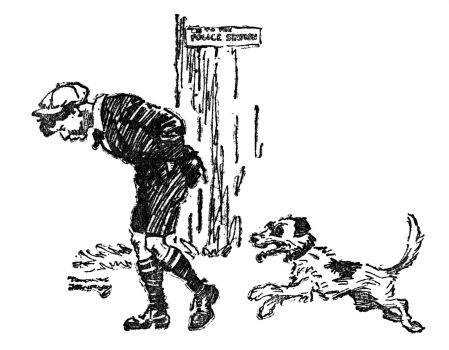 |
| Richard Long's "A Line Made by Walking" |
Did you hear about these guys: Robin Heath, Peter Forrester, Jamie Dakota, and Max Barnes? Last month hey decided to walk ‘the longest straight-line walk without a road’ in Great Britain, and it ended not in disaster but in slightly predictable disarray.
It all started with a question asked of the good men and women at Ordnance Survey (lots of background can be found on the OS website) by one Roger Dalton who wrote,
‘Hello! An enquiry if I may.....what (and where) is the longest distance you can walk in a straight line in England/Wales/Scotland without crossing a road (defined as a paved surface for vehicular use)?? Planning a potential expedition. Ta!’
The reply came back, ‘So for Great Britain, the longest straight line that you can walk without having to stop, look and listen is 71.5km or 44.43 miles (71500.817767m) and is unsurprisingly in Scotland. Crossing the Cairngorms, the distance goes from 262540, 778255 on the A9 and ends at 328042, 806921 south of the hamlet of Corgarff. The high point is on the summit of Beinn a’Bhuird at 1,179m (3,870ft).
They quote Cairngorms expert Eddie Bulpitt who said ‘I wouldn’t recommend anyone do it unless they are very conversant with a map and compass. It is not following known tracks or paths, and it looks like there may well be several scrambles along the way too.’
OS adds some relevant maps, that's one of them above, pretty low def, but I think the OS understandably don’t want to give their maps away. I think there’s an issue here. I know the OS are mapmakers, but being able to draw a straight line on a map, isn’t quite the same as having a straight walking route, is it? And does ‘without roads’ really matter? You can walk straight across a road, you walk straight along a road.
Anyway the four merry lads read about this in the papers, mounted an expedition, and were defeated, largely by the weather – rain, cold, boggy ground – and perhaps by their own natures. Some of us know, without putting it to the test, that we’re not up to walking across a bleak stretch of Scotland in mid-October, but evidently some don’t know it.
And here’s a map published in the Times showing their route. Maybe I’m mistaken but that really doesn’t look very straight at all.
And of course, you might in any case ask what’s so great about walking in a straight line anyway. Allow me to quote Richmal Crompton in Sweet William.
‘William walked down the road, whistling his loud, untuneful whistle and kicking a suitably-sized stone from side to side. He wasn’t going anywhere in particular, so it didn’t matter when he got there. Even if he had been going anywhere in particular it wouldn’t have made any difference. William considered it a waste of time to walk straight along the road. If there weren’t stones to kick, there were ditches and hedges to investigate, trees to climb … '
























